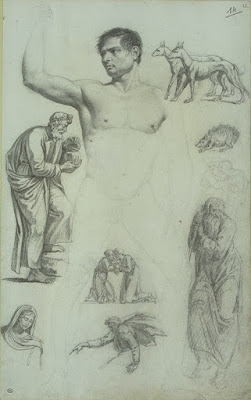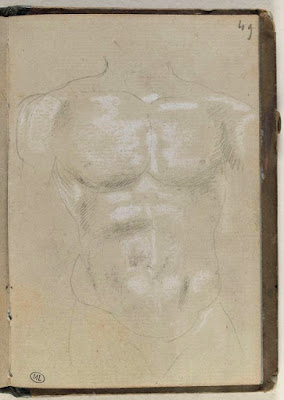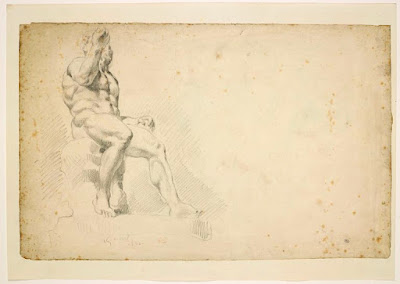 |
| Eugène Delacroix Figure Study 1860 drawing Musée du Louvre |
 |
| Eugène Delacroix after Michelangelo Figure of Adam, from the Sistine Ceiling (copied after an engraving) 1822 drawing Musée du Louvre |
 |
| Eugène Delacroix Figures with Angel before 1863 drawing Musée du Louvre |
 |
| Eugène Delacroix Sheet of Studies 1840 drawing Musée du Louvre |
 |
| Eugène Delacroix Sheet of Studies ca. 1820-22 drawing Musée du Louvre |
 |
| Eugène Delacroix Sheet of Studies ca. 1820-22 drawing Musée du Louvre |
 |
| Eugène Delacroix Sheet of Studies ca. 1825 drawing Musée du Louvre |
 |
| Eugène Delacroix Sheet of Studies ca. 1825 drawing Musée du Louvre |
 |
| Eugène Delacroix Study of Back ca. 1820 drawing Musée du Louvre |
 |
| Eugène Delacroix Study of Legs ca. 1840 drawing Musée du Louvre |
 |
| Eugène Delacroix Study of Torso ca. 1820 drawing Musée du Louvre |
 |
| Eugène Delacroix Study of Torso ca. 1820 drawing Musée du Louvre |
 |
| Eugène Delacroix Study of Antique Statue ca. 1840 drawing Musée du Louvre |
 |
| Eugène Delacroix Study of Antique Statue of Hercules 1840 drawing Musée du Louvre |
 |
| Eugène Delacroix Study of Antique Statues - Term and Barbarians ca. 1840 drawing Musée du Louvre |
"One fine day M. Sosthène de La Rochefoucauld, then Directeur des Beaux-Arts, sent for Eugène Delacroix, and, after lavishing compliments upon him, told him that it was vexing that a man of so rich an imagination and so fine a talent, a man, moreover, to whom the government was favourably disposed, should not be prepared to add a little water to his wine; he asked him once and for all if it would not be possible for him to modify his manner. Eugène Delacroix, vastly surprised at this quaint condition and these ministerial counsels, replied with almost a parody of rage that evidently if he painted thus, it was because he had to and because he could not paint otherwise. He fell into complete disgrace and was cut off from any kind of official work for seven years."
– from The Salon of 1846, published in Art in Paris, 1845-1862: Salons and Exhibitions reviewed by Charles Baudelaire, translated and edited by Jonathan Mayne (London: Phaidon Press, 1965)